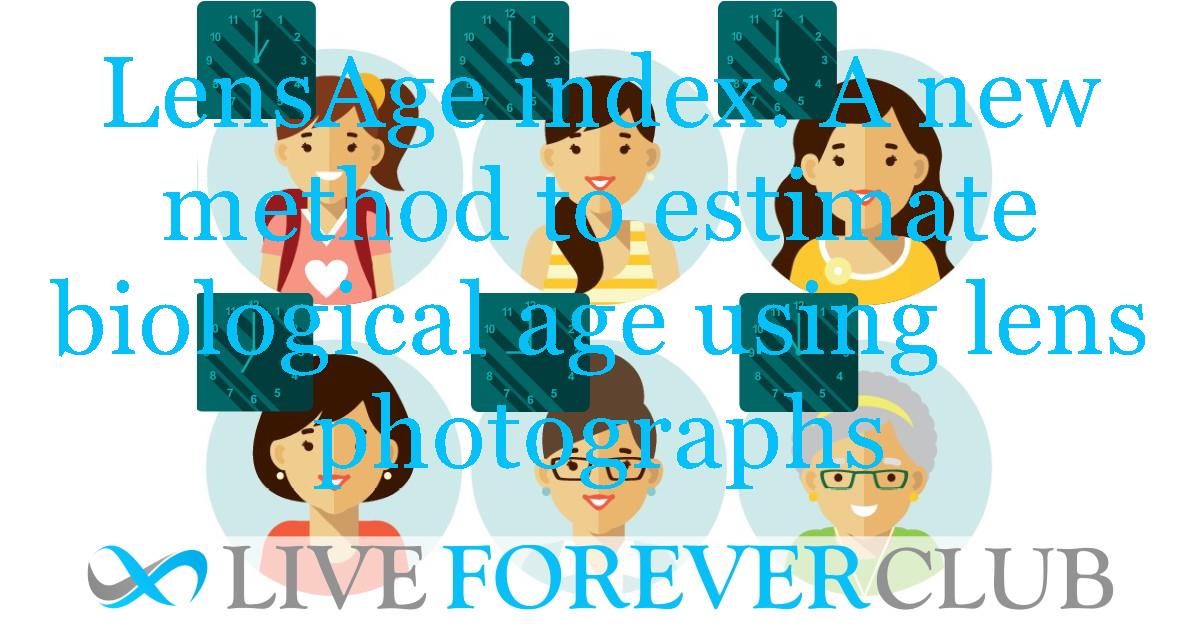In the pursuit of understanding the mysteries of ageing, scientists have long recognised that the number of years lived — our chronological age — doesn't always align with the body's wear and tear, known as biological age. Biological age is a more nuanced measure, reflecting the health and functional capabilities of our bodies, influenced by genetics, lifestyle, and environmental factors. This concept is crucial in medical science, as it provides insights into an individual's health status and risk of age-related diseases far more accurately than mere calendar years.
Deep Learning and the LensAge Index
A groundbreaking study led by Ruiyang Li and colleagues has taken a novel approach to estimating biological age. Their research, published in a prestigious journal, introduces the 'LensAge index' – a deep learning-based metric that assesses biological age through detailed analysis of lens photographs. This innovative method offers a non-invasive, objective, and potentially widely accessible means to monitor health and predict risks associated with ageing.
The study involved collecting lens images from a diverse group of participants. Using advanced deep learning algorithms, the team analysed these images to identify patterns and markers associated with ageing. This approach differs significantly from traditional methods, which often rely on blood tests or other invasive procedures.
The core of their research revolved around the LensAge index, a deep learning-derived measure that quantifies biological age based on the condition of the human lens.
The team's analysis revealed a strong correlation between the LensAge index and the participants' biological age. Unlike chronological age, which simply counts the years since birth, biological age is a more comprehensive reflection of an individual's health, encompassing factors like genetics, lifestyle, and environmental exposures. The LensAge index, through its detailed examination of the eye's lens, captures these subtleties, offering a more accurate picture of an individual's true biological state.
One of the most striking findings was the LensAge index's ability to predict age-related diseases. The research showed that a higher LensAge score was associated with an increased risk of various conditions commonly linked to ageing, such as cardiovascular diseases, diabetes, and neurological disorders. This association was quantified using statistical models that accounted for various confounding factors, ensuring the robustness of these findings.
Perhaps the most consequential aspect of the study was its insight into mortality risk. The statistical analysis indicated that individuals with a higher LensAge index had a notably higher risk of mortality compared to those with a lower index. This finding underscores the potential of the LensAge index as a tool not only for assessing health status but also for predicting life expectancy, which could have significant implications for preventive health care.
The research team employed advanced statistical methods to validate their findings. They ensured that the results were not merely coincidental by using a large and diverse sample size, which lends credibility to their conclusions. Additionally, the use of deep learning algorithms allowed for a more nuanced analysis of the lens images, capturing subtle variations that might be missed by the human eye or less sophisticated methods.
The statistical insights provided by the LensAge index open new horizons in personalised medicine. By offering a precise measure of biological age, this tool could help tailor medical interventions and lifestyle recommendations to an individual's specific ageing profile, potentially improving health outcomes and quality of life in the ageing population.
The implications of this research are far-reaching. By providing an accurate and non-invasive method to determine biological age, the LensAge index could revolutionise how we approach health monitoring and disease prevention. It paves the way for personalised medical interventions and lifestyle adjustments based on an individual's biological ageing process.
Future Directions and Limitations
The research marks a significant milestone in the field of ageing and personalised medicine. However, like all pioneering studies, it opens as many questions as it answers, pointing to several future directions and acknowledging its limitations.
One of the critical future directions is to broaden the research scope. The initial study, while robust, was limited in terms of the demographic diversity of its participants. Future research could include a more diverse array of subjects, encompassing different ethnicities, lifestyles, and genetic backgrounds. This expansion would enhance the generalisability of the LensAge index, ensuring its applicability across a wider spectrum of the global population.
Longitudinal Studies for Better Insights
Another important avenue is conducting longitudinal studies. The current research offers a snapshot of the correlation between the LensAge index and health outcomes. However, longitudinal studies, tracking individuals over time, would provide deeper insights into how the LensAge index changes with lifestyle modifications, medical interventions, and environmental shifts.
Integration into Clinical Practice
Integrating the LensAge index into routine clinical practice presents both an opportunity and a challenge. Future research needs to focus on the practical aspects of such integration, including the development of standardised protocols for lens imaging, ensuring the affordability and accessibility of the required technology, and training healthcare professionals in interpreting LensAge data.
Addressing Limitations
The study's limitations are primarily centred around its nascent stage. The current models used in the research are based on deep learning algorithms that require large datasets for training and validation. Ensuring the accuracy and reliability of these models in real-world, diverse clinical settings is crucial. Additionally, the study's focus on the lens as the sole indicator of biological age might overlook other vital ageing markers present in different body systems. Future research could explore the integration of the LensAge index with other biological age indicators for a more comprehensive assessment.
Ethical and Privacy Considerations
As with any technology dealing with personal health data, ethical and privacy considerations are paramount. Future developments must address data security, consent processes, and ethical use guidelines, particularly as this technology moves closer to widespread clinical application.
Technological Advancements
Lastly, technological advancements will play a critical role in the evolution of the LensAge index. Improvements in imaging technology, along with advancements in AI and machine learning, could enhance the accuracy and usability of the LensAge index, making it an even more powerful tool in the fight against age-related diseases.
Conclusion
The research on the LensAge index represents a significant stride in the field of gerontology and personalised medicine. It not only challenges our understanding of ageing but also opens new avenues for proactive health management.
Credits and Acknowledgements
This research was spearheaded by researchers from the Zhongshan Ophthalmic Center, China. The study was published in Nature, contributing significantly to the field of ageing research.






